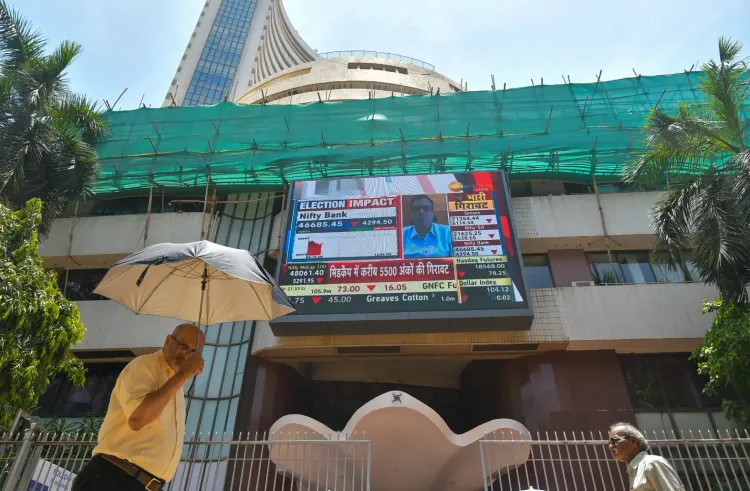Why Did Sensex Close Lower Amid Rising Mideast Tensions?

Synopsis
Key Takeaways
- Sensex dropped 511.38 points (0.62%)
- U.S. airstrikes on Iran escalated tensions
- Broader markets showed resilience
- Nifty IT index suffered the most
- Rupee weakened against the dollar
Mumbai, June 23 (NationPress) The Indian stock markets kicked off the week on a downward trend as tensions in the Middle East intensified following the U.S. airstrikes on three nuclear sites in Iran, signaling strong support for Israel in the ongoing conflict.
This news prompted investor caution, resulting in a decline in the benchmark indices. The Sensex fell by 511.38 points or 0.62%, closing at 81,896.79. Throughout the day, it fluctuated between a high of 82,169.67 and a low of 81,476.76.
In a similar vein, the Nifty index also ended lower, decreasing by 140.50 points or 0.56% to finish at 24,971.90. It reached an intra-day high of 25,057 and a low of 24,824.85.
Interestingly, the broader markets showed resilience, with the Nifty Midcap100 rising by 0.36% and the Smallcap100 up by 0.70%.
Among the 30 stocks in the Sensex, the biggest losers included HCL Tech, Infosys, and Mahindra and Mahindra, which saw declines ranging from 2.28% to 1.21%.
Conversely, top gainers were Trent, Bharat Electronics, and Bajaj Finance, with increases between 3.39% and 0.58%.
The performance across sectoral indices was varied, with Bank Nifty, Auto, FMCG, and Realty sectors closing in the red, while metal, consumer durables, pharma, and media sectors managed to post gains.
The Nifty IT index experienced the most significant drop, falling by 1.48% due to declines in stocks like Coforge and Persistent Systems.
Vinod Nair from Geojit Investments Limited noted, “Last Friday, markets were optimistic about easing tensions in the Middle East following the U.S. announcement regarding its involvement in the Israel-Iran conflict. However, the unexpected U.S. airstrikes on Iran’s nuclear facilities disrupted these expectations, leading to a spike in crude oil prices and a consolidation phase in the domestic equity market.”
The market's volatility gauge, the India VIX, rose by 2.74% to 14.05 points.
Despite a gap-down opening influenced by weak geopolitical sentiments, the Nifty managed a notable recovery, aided by a pullback in crude oil prices. However, it still ended on a negative note.
Meanwhile, the rupee weakened by 0.11 to 86.75, as the dollar index approached the 99 mark. Jateen Trivedi from LKP Securities commented, “Technically, the rupee remains under pressure below 86, with the next support level at around 87.”









